Even If He Has The Tail Number In His Logbook
Ah, Friday nights, when government agencies let slip the news.
And Friday, May 26th, the Pentagon dropped a bit of news that has
the potential to be a major boost to United Technologies
Corporation's Sikorsky business unit. Specifically, a Pentagon
panel that was reviewing proposed Black Hawk helicopter
upgrades has blessed Army plans to go forward with "preplanned
product improvements."
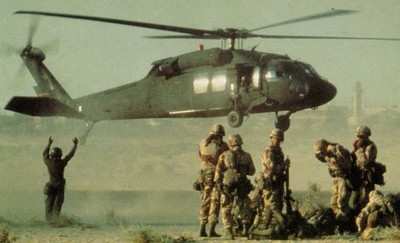
The memo authorizing the next step in the UH-60M upgrade process
was signed by Under Secretary of Defense for Acquisition, Kenneth
Krieg. Krieg's memo permits the Army to spend fiscal year 2007 and
2008 money on UH-60M development.
As many as 1,200 Army helicopters are eligible for the UH-60M
upgrade. Sikorsky has been producing a trickle of UH-60Ms,
primarily from overhauled airframes, since 2002 in parallel with
new-build UH-60Ls; low-rate initial production of just 22 all-new
UH-60M aircraft began last year.
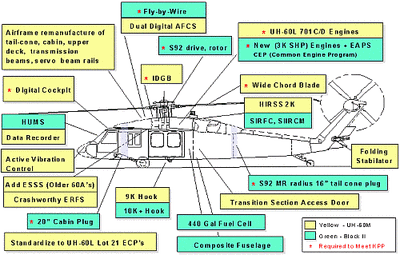
The Army needs to buy new Black Hawks in part to provide
attrition replacements, and in part to replace the phased-out UH-1
Huey (or, officially, "Iroquois," an official name that never quite
stuck). In addition, the Army is buying less capable utility
helicopters for non-tactical missions, where the Black Hawk's
22,000 lb. lifting power and ability to take battle damage isn't
required.
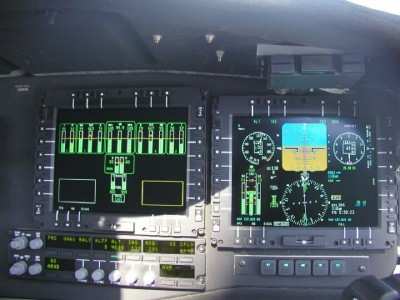
The Army's utility and cargo helicopters, the UH-60 and the
CH-47, have been one of the success stories of the Global War On
Terrorism. In addition, other variants of the H-60 are used by the
Navy and by Army and Air Force Special Operations Aviation; and
Sikorsky produces the aircraft as the S-70 for foreign militaries
and a handful of police and fire agencies.
The Black Hawk seems like a shiny new craft to those of us of
Huey vintage, and it seems like only yesterday that the first one
arrived at Ft Bragg and was put to work ferrying the Commanding
General around -- but that was 1981; as with so many other US
military aircraft, some of the airframes are older than some of the
pilots. The Army started testing the UH-60A in 1978.
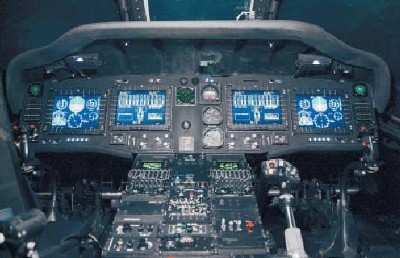
The proposed UH-60M rebuild will keep the old Black Hawks
vigorous, like the downy-cheeked Warrant Officer Ones and Second
Lieutenants that fly them. The upgrade focuses on powertrain and
avionics. The powertrain upgrade will replace the engines with new,
uprated General Electric T700-GE-701D units (2,000 SHP for 2.5
minutes, 1,716 shp continuous), an improved and updated
transmission, new main rotor blades with wider chord and composite
spars. The wider chord rotors increase lift 500 lb at sea level on
a standard day. The fuselage is strengthened to support the gross
weight, power and lift increases.
The wide-chord rotor blade looks awfully familiar to Sikorsky
watchers. That's because it's the blade developed for the S-92,
shortened by about a foot. The transmission also shares S-92
DNA.
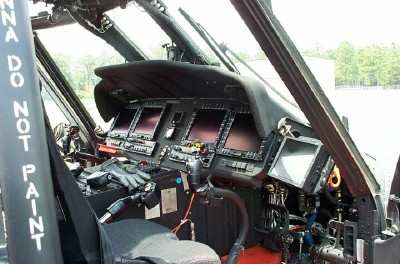
The engines' greater power comes from improved hot-section parts
from GE's commercial engine line, better materials and coatings,
and a high-flow compressor. Along with greater power, GE is
promising longer hot-section life. The engines are FADEC
controlled.
The real change is apparent when you sit in the pilot seat.
Instead of the UH-60A's or -L's battery of steam and tape gages,
you are looking at four large multi-function displays that cover
most of the instrument panel. The UH-60M features an all-new
Rockwell Collins "glass panel" avionics suite, based on a digital
IEEE 1553 bus. A four-axis autopilot is coupled to the Embedded GPS
Inertial (EGI) navigation system and flight computer. Similar
Rockwell Collins technology has been proven in special operations
MH-60K and Coast Guard HH-60K aircraft.
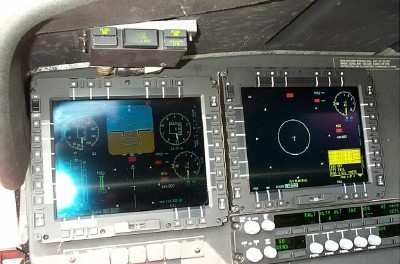
The aircraft also incorporates an active vibration control
system, and one future technology that may roll into later blocks
of the UH-60M is onboard rotor track and balance. While the parts
come from all over, most of the work would probably be done at
Sikorsky's Connecticut facilities.
The Black Hawk is not at the end of its potential for upgrades,
either. The improved -701D engines incorporate some parts from the
commercial CT7-8 turboshaft engine, which has shown a 3,100 shp
capability. The original engine, the T700-GE-700, was designed to
put out 1,500 shp! The power and rotor blades together make the M
model lift 500 lbs. more than the previous model, UH-60L -- but
2,000 lb. more than the UH-60A.
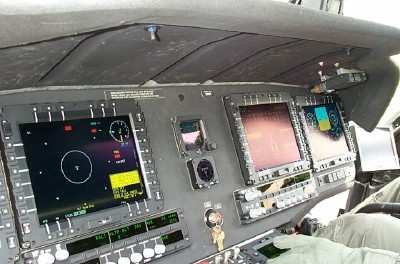
So, you could say it's not your father's Black Hawk. Even if it
is. (But, sad to say, the situation posed in the article title
won't exactly happen like that. When Sikorsky rebuilds an airframe
to UH-60M status, it's completely gone through and given a new
zero-time logbook and a new serial number. So you'll have to look
up your Black Hawk on Joe Baugher's Serial Number Page to
see if it's one Pater flew. Sorry 'bout that).
 Aero-News: Quote of the Day (04.27.25)
Aero-News: Quote of the Day (04.27.25) ANN's Daily Aero-Linx (04.27.25)
ANN's Daily Aero-Linx (04.27.25) Classic Aero-TV: Veteran's Airlift Command -- Serving Those Who Served
Classic Aero-TV: Veteran's Airlift Command -- Serving Those Who Served Airborne-NextGen 04.22.25: NYC eVTOL Network, ForgeStar-1, Drone Safety Day
Airborne-NextGen 04.22.25: NYC eVTOL Network, ForgeStar-1, Drone Safety Day Airborne 04.21.25: Charter Bust, VeriJet Woes, Visual Approach Risks
Airborne 04.21.25: Charter Bust, VeriJet Woes, Visual Approach Risks









